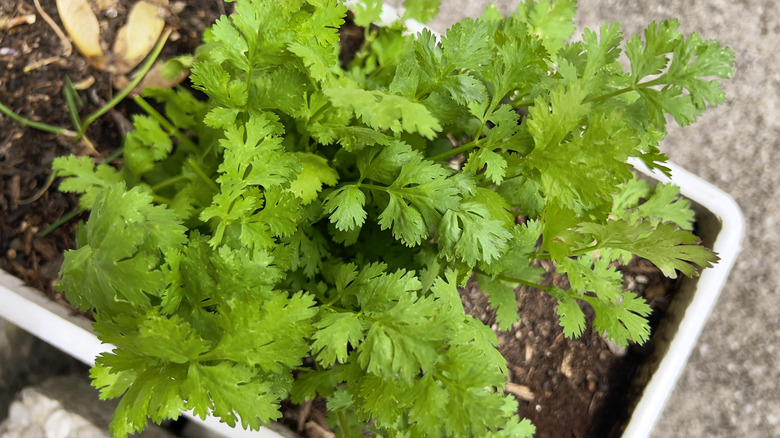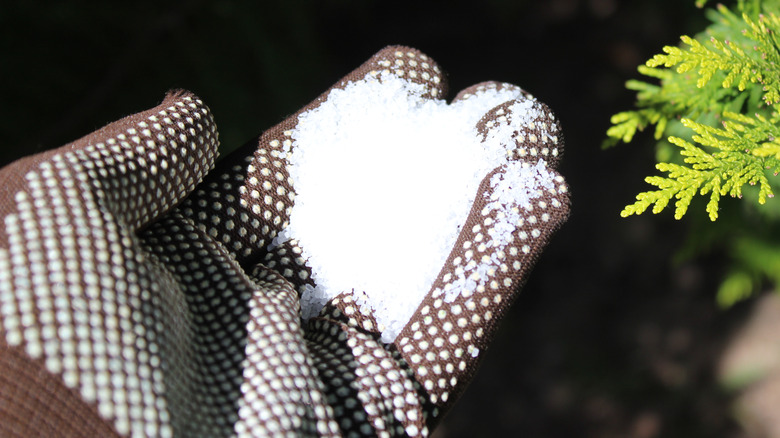Your Cilantro Plants Will Flourish With The Help Of One Household Essential
We may receive a commission on purchases made from links.
If you are the type of gardener who loves to try new ways to help your plants flourish, the single ingredient for your next hack might already be in your bathroom. Epsom salt is useful for more than just soaking in the tub; it can also eliminate odors from a couch and add extra privacy to your windows. But there is one more unexpected way Epsom salt can come in handy: on the cilantro plants in your garden.
Epsom salt is chemically known as magnesium sulfate, meaning it is primarily made up of magnesium and sulfur. Both chemicals can be beneficial for your cilantro — magnesium boosts chlorophyll production and improves the uptake of other nutrients like nitrogen, and sulfur helps with plant metabolism and protein production. If your cilantro is not quite green enough, Epsom salt can help revive that lush look.
To use Epsom salt to fertilize your cilantro, you have two options. One option is to place the salt directly in the soil. The other option is to create a foliar spray. For the direct-to-soil option, apply one teaspoon of Epsom salt per foot of the plant's size once a month. For the spray option, mix 1 tablespoon of Epsom salt into 1 gallon of water and spritz it on the cilantro leaves. Avoid spraying during high-temperature, high-sunlight times of day to prevent leaf scorch.
More benefits and precautions of fertilizing cilantro with Epsom salt
Besides helping fertilize your cilantro, Epsom salt has the side benefit of controlling garden pests. Many insects dislike the magnesium sulfate, so would-be problematic pests for cilantro like aphids and spider mites will leave your plant to flourish in peace. Even better, you get this bug-controlling bonus without needing to use harsh insecticides.
Epsom salts still come with precautions. Like any other fertilizer, too much can become harmful. The magnesium in Epsom salts can inhibit plants' calcium uptake, which can lead to nutrient imbalances including magnesium toxicity. Keep an eye on your plant for symptoms like coppery-colored leaves and defoliation, aka leaves falling off.
You may not need the bonus fertilization in the first place — use a DIY test to check the health of your soil, or send samples off to a lab to see if your magnesium and sulfate levels are already optimal. If they are, it is best to skip the salt until your cilantro needs it. The best way to tell if Epsom salt is helping your cilantro is to monitor it over time. If you see increased foliage and more brightly colored cilantro, your plant is happy, and you are doing the right thing.

